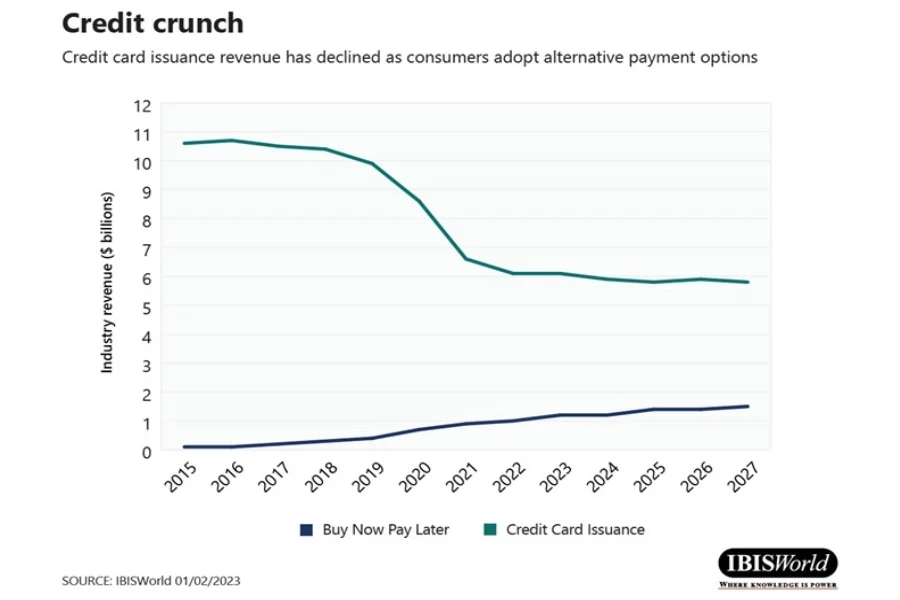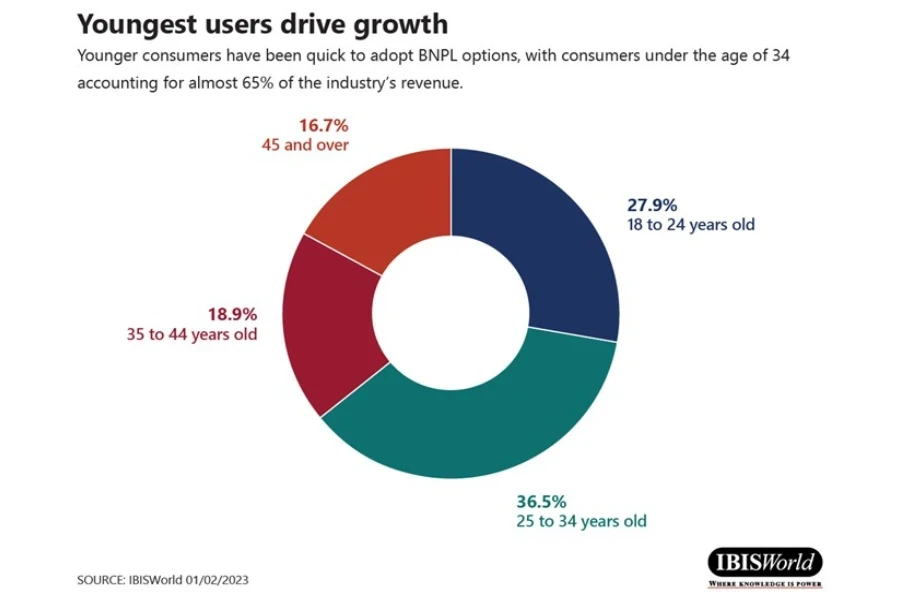Key Takeaways
Increasing demand for BNPL services with 37% growth compared to the previous financial year.
Young users of BNPL have an unhealthy relationship with money, causing high levels of debt and financial hardship.
The federal government has released three options to regulate the industry in response to consumer concerns.
Westpac supports the third option, aligned with consumer groups, while CBA and NAB favour the second option.
First introduced to the Australian financial scene in 2011-12, the Buy Now Pay Later (BNPL) industry has witnessed an explosive growth in popularity among consumers who are shifting away from traditional credit and embracing the flexibility and convenience of BNPL services.
The COVID-19 pandemic has only accelerated this trend, as more consumers seek out alternative financial solutions in uncertain times. Despite the rapid growth of this industry, there are concerns over the potential consequences of such financial products, particularly for those who are already financially vulnerable.
With the current absence of federal regulations specific to BNPL products, the recent proposed regulations paper released by the Treasury marks a significant turning point in shaping the future of BNPL in Australia.
BNPL changes the way we trade…
BNPL offers consumers a more convenient alternative to traditional credit forms by allowing them to purchase goods or services in multiple interest-free instalments. This industry generates revenue through service fees or a percentage of the transaction charge to merchants. Operators may also charge account-keeping fees, establishments fees, and late fees to their users. Not only does BNPL offer flexible payment options, but it can also serve as a valuable marketing tool for merchants as it enables consumers to spend more, potentially increasing sales.

The BNPL landscape is primarily dominated by the big three: Afterpay, Zip, and Humm, which account for more than 80% of the market share combined. Despite their presence, the industry continues to offer opportunities for growth and innovation, making it a thriving and dynamic space for both consumers and businesses.
The 2021-22 financial year has seen a surge in the demand for BNPL services across various sectors, including department stores, online shopping, and credit issuance with approximately 7 million active BNPL accounts and $16 billion worth of transactions. Major retailers such as eBay, Amazon Australia, Big W, Bunnings, Jetstar, and Kmart adopting these payment options further highlights the increasing popularity.
…and its popularity has not gone unnoticed.
Commonwealth Bank of Australia (CBA) has heated up the competition among banks with its recent launch of StepPay, which allows transactions from $100 to $2,000 using standard BNPL models, and further invested $30 million into the Little Birdie e-commerce marketplace. This move comes after CBA invested $300 million into Klarna for a 5% stake in 2020.
Meanwhile, National Australia Bank (NAB) jumped on the BNPL bandwagon with the launch of its “NAB Now Pay Later,” offering no account fees, no interest, and no late fees, as well as its no-interest credit card “StraightUp.”
Westpac partnered with Afterpay in the past for the rollout of the money and lifestyle app, Money, but this partnership has since ended following Block, Inc.’s acquisition of Afterpay.
On the other hand, ANZ has opted for traditional credit cards and personal loan products over BNPL services. It recently acquired Cashrewards Limited for $100 million in December 2021 and still seeks to offer a healthy budgeting alternative to BNPL. As of now, neither ANZ nor Westpac has launched BNPL products.
Who are the big spenders?
While BNPL services cater to both businesses and individuals, consumers continue to be the primary adopters of these services.

While the 35 to 44 age group tends to have stable finances, higher income levels, and greater purchasing power, the consumer group aged 45 and above tend to shy away from digital platforms and stick with conventional payment methods. These consumer groups value traditional banking practices and account for a smaller share in the BNPL market.
Contradictorily, younger consumers aged 18 to 34, known for their tech-savviness, are more drawn to utilizing technology for their personal finance management. These groups see BNPL services as a more affordable alternative to traditional credit cards and often avoid interest charges and debt.
The temptation to overspend with the “buy now, pay later” mentality, along with limited income and lack of understanding of credit and debt management, leave these groups significantly more financially vulnerable.
As consumers’ financial vulnerability is still a concern, the government is taking measures to strengthen regulations on BNPL to ensure their protection.
Regulations in Australia: Balancing convenience and risk
By 2020, a significant number of consumers were reported at risk, with 1 in 5 Australians unable to meet their payment obligations. In response to a Senate inquiry in February 2021 seeking to enhance safeguards for customer through self-regulation, BNPL providers established a voluntary code of conduct.
This covered existing providers, including Brighte, Humm, Klarna, Latitude, OpenPay, Payright, and Zip, as well as potential new entrants to the market. Second-tier banks such as Macquarie Bank and ING incorporated BNPL debts into their home loan affordability assessments, requiring customers to disclose such debts.
In November 2022, the Treasury released the BNPL options paper for public review. The paper highlights key regulatory challenges identified within lending practices, the complaint handling process, consumer fees and charges, credit reporting framework, and product disclosure practices.
Three options were proposed to address these issues: Option 1 strengthens the Industry Code and introduces an affordability test for BNPL products; option 2 applies reduced regulation under the Credit Act with a requirement for BNPL providers to hold an Australian Credit Licence; and option 3 regulates BNPL under the Credit Act.
ANZ and Westpac see the regulations as a way to improve transparency, consumer protection, the reputation and stability of BNPL services, and to ensure the industry operates in a safe and responsible manner for consumers. Westpac, in particular, views option three as the ideal launchpad for regulating the rapidly growing BNPL sector.
In contrast, CBA and NAB endorse option two, but have expressed concerns about regulatory requirements which could inflate operational costs and decrease competitiveness, as they offer BNPL services and are assumably affected by the proposed regulations.
Where is BNPL headed?
The industry has been in a constant state of evolution, with companies striving to find the balance between profitability and sustainability. The record-breaking acquisition of Afterpay by US-based Block (formerly Square) last August was a typical example of the inconsistency the industry is facing.
The deal was perfectly timed, but the structure was much less desirable, resulting in Block paying with its own stock. The collapse of the proposed merger between Zip and Sezzle as well as the downfall of Openpay are further proof that the search for a suitable business model among BNPL players continues.
The BNPL industry is relatively new and still finding its footing. Some established players continue to struggle to achieve profitability, mainly due to high operating costs, intense internal and external competition and regulatory hurdles, while other newer players are experiencing strong growth.
The already-high operational costs are further exacerbated by a combination of factors including technology infrastructure, customer acquisition costs, compliance and regulation, and personnel. The industry is now facing consumer spending dried up by nine consecutive interest rate hikes, coupled with increasing regulation pushing further overhead expenses.
The BNPL industry is currently operating with certain exemptions from consumer protections outlined in the Credit Act. However, the government is moving forward with plans to introduce new regulations by the end of 2023 which will have a significant impact on the future of the industry. These strengthened regulations will undoubtedly present new challenges for the industry to navigate.
Source from IBISWorld
Disclaimer: The information set forth above is provided by IBISWorld independently of Alibaba.com. Alibaba.com makes no representation and warranties as to the quality and reliability of the seller and products.




